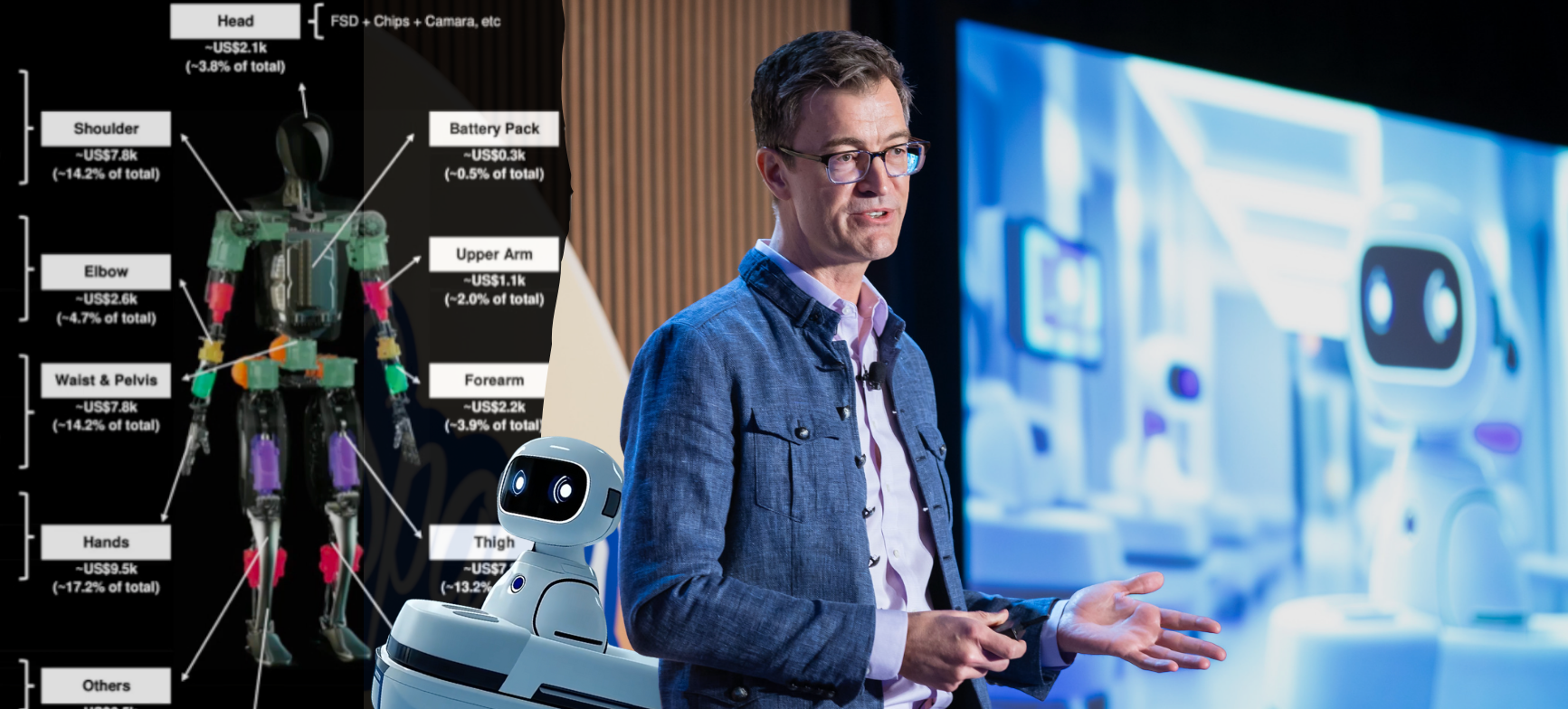Your facilities tech already knows how to fix a chiller, rewire a panel, and navigate every corridor of your hospital. What if that same person could build a robot—for $500—that works around the clock, never calls in sick, and pays for itself in weeks?
At HealthSpaces, Jordan Cram, CEO of Enstoa, made the case that while healthcare systems debate million-dollar automation investments, the real opportunity might be sitting inside their own facilities departments.
"I do think a facilities department of the future has a robotics capability," he said, "because these are individuals that are mechanically minded and electrically minded, and they know their hospital."
The ROI That's Hiding in Plain Sight
Cram began by reframing how we think about value from AI and robotics—starting with generative AI. He pointed to a Harvard Business School study showing teams using ChatGPT completed 12% more tasks, 25% faster, and with 40% better quality.
"If you've got somebody making a hundred thousand dollars, and they become 12 to 20% more efficient—that's $20,000," he said. "Have you ever seen a return on investment where you invest $300 and you get $20,000 back? That's 7,000%."
For a tool that costs just $25 a month, the payoff is almost impossible to ignore. But Cram argued that robotics presents an even larger upside. He cited Morgan Stanley's estimate of a $60 trillion total addressable market—"20 times the impact and magnitude" of the $3 trillion global automotive industry.
He also pointed to the pace of adoption. "Last year, there were 51 humanoid robotic reveals," he said. "I have no idea what that number is gonna be in 2025. I bet it's a lot higher."
Build, Don't Buy
What most people picture when they hear "robotics," Cram said, are complex humanoid machines or expensive vendor platforms. However, the actual opportunity is much simpler—and less expensive.
"These little creatures are here today," he said, walking through the core components of a basic robot: mecanum wheels, hobby motors, actuators, servos, microcontrollers, sensors, and lithium-ion batteries. Many of those parts are under $30. The full setup? Less than $500.

A Basic Robot
"These units can drive by themselves, navigate through a facility, pick things up, move things around, can tell you if it's clean or dirty, can tell you if the door is scratched or not, can find the portable equipment, and so on," he explained.
And the secret to unlocking it all is computer vision—a capability that turns cameras into real-time measurement tools. "If it can be seen, it can be identified and it can be monitored," Cram said. "That is not natural for us, but I really challenge you to rewire your programming there."
Go Big or Go Home
Cram didn't present robotics as a side experiment. He urged facilities leaders to commit—financially and strategically.
"I would recommend you think seriously about taking 5% of your annual CapEx," he said. "If you're spending $100 million on CapEx each year, put $5 million into it. If you're spending $200 million, put $10 million into it."
His prediction? That investment will pay off quickly. "That $5 million you put in 2026—I'm certain you're going to get a $5 million return in 2027 and every year thereafter."
To him, the bolder move is also the safer one. "The big commitments are the safer play than doing incremental improvements. I'm not sure that's going to work," he said. "And it is way safer than doing nothing."
You Need a Digital Master Plan
Cram believes healthcare systems need the same kind of long-term strategy for technology that they already apply to physical infrastructure. "You all are experts in developing master plans for your campuses and your facilities. Well, you need one here as well."
That digital master plan should clearly define the organization's North Star, include committed cost and payback metrics, outline the systems architecture, and establish a realistic implementation roadmap.
And it all starts with data. "Your projects dataset, your space dataset, your assets dataset—those need to be integrated. Once you reach that level, you can move quite quickly," Cram said.
Why It Matters Now
AI tools are exploding in use. OpenAI alone is processing one billion questions per day, with 800 million weekly users. In robotics, the market is moving just as quickly—and the cost of inaction is rising just as fast.
"These are not million-dollar tools," Cram reminded the audience. "These are low-cost, accessible components. You can put them to work in your organization right now."
The bottom line? Robotics doesn't belong in a lab. It belongs in your facilities team's toolbox—and if Cram is right, the future of healthcare facilities won't be built for them. It'll be built by them.
Watch his full talk below…

Posted by
Collaborate with your Peers!
HealthSpaces is a community for people that plan, design, build and operate spaces where healthcare is delivered.
June 7-9, 2026 | Braselton, GA
Learn More




-4.png)
-Dec-09-2025-05-48-44-4379-PM.png)
-4.png)
-1.png)
-2.png)

Comments